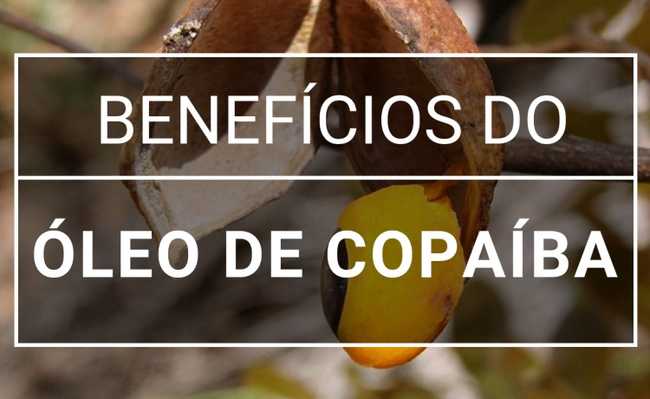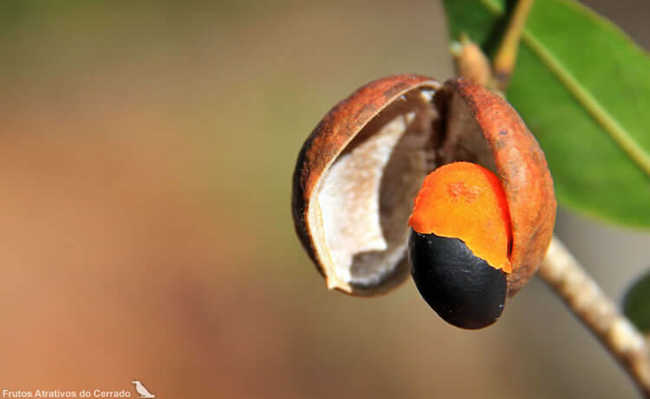Copaiba oil: what is it for and benefits
Learn about the uses and benefits of "miraculous" copaiba oil

Copaiba is a native tree of Latin America and West Africa, very prevalent in Brazil in the Amazon regions. Also known as copaibeira, pau-de-oleo and copaiba oil, it is a large plant, reaching up to 40 meters in height and four meters in diameter. Copaiba lives for about 400 years.
The fruits produced by copaiba are black and oval seeds, with a yellowish region - they are very rich in lipids, but the most used product from this tree is the oil produced by it (which has nothing to do with the fruits). Copaiba oil is extracted from the trunk of the tree and is used for medicinal purposes in the cosmetic and pharmaceutical industries, with functions such as antibiotics, anti-inflammatory and healing.
Copaiba oil extraction
Unlike most vegetable oils, which are extracted from fruit seeds, copaiba oil is produced in the stem of the plant, that is, it is a natural product existing in the copaiba trunk. The oil-resin produced in the trunk is a product of the detoxification of the plant organism and works as a plant's defense against animals, fungi and bacteria.
The extraction of this oil is done by drilling the trunk of the copaiba. The process, however, must be done properly, so as not to harm the tree's life. Previously, the trunks of copaiba were cut with an ax, which facilitated obtaining large amounts of oil. But, as you can imagine, this practice caused an excessive deforestation of the species, leading to the death of trees and making it impossible for them to be recovered for a new removal of the copaiba oil.
In view of this situation, new techniques were adopted. One of them has been considered non-aggressive and is currently the most used. It consists of using an auger, which perforates the trunk without harming the tree, enabling its recovery so that new oil extractions from the copaiba can be made in the future.
The extraction of copaiba oil must be done in very old trees (more than 100 years old) and that have dry branches on top, as they have larger amounts of oil in their interior. Young copaíba trees do not have oil and can be seriously harmed if they are drilled.
When the trunk is pierced, oil begins to flow through the hole and is collected in a container. After collection, the hole must be sealed (preferably with clay) to prevent infections and insect attacks. When recovered, the seal is removed for a new copaiba oil harvest.
What is copaiba oil for
Copaiba oil was nicknamed "Amazon balm" due to its qualities. It is composed of 72% of sesquiterpenes (hydrocarbons) and 28% of diterpenes (carboxylic acids), but this composition can vary according to the type of copaiba, age of the tree and soil, among other factors.
The main sesquiterpenes found in oil-resin are β-cariophilene, responsible for the anti-inflammatory, antifungal and anti-edemic action, and β-bisabolene, with analgesic action, among many other compounds. These substances are responsible for the aroma of copaiba oil and for its antiviral and antiulcer properties.
The diterpenes present in copaiba oil are responsible for most of its therapeutic properties. Among them are copaiferous acid, copalic acid, calavenic acid and colavenol. Copalic acid is known as the copaiba marker, as it is a component present in any copaiba oil regardless of the type of soil or tree.
Copaiba Oil Benefits

Image: "Copaíba" by Frutos Atrativos do Cerrado is licensed under CC BY 2.0
Among the various health benefits of copaiba oil are the following:
- Antiseptic and anti-tetanus potential;
- Expectorant: the application of four drops of copaiba oil mixed with honey helps in expectoration;
- Infections: Gargling with the oil helps in sore throats and tonsillitis. It is also effective for genital infections and hemorrhoids;
- Anti-tumor: ability to act against cancer cells responsible for breast, prostate and colon cancer;
- Fights rheumatism and muscle pain: massaging with copaiba oil activates blood circulation, relieving pain, rheumatism and inflammation. It also helps in the treatment of gout;
- Skin diseases: as it is anti-inflammatory, when applied to the affected region, it helps in the treatment of dermatitis, urticaria, psoriasis, acne, herpes, wounds, leishmaniasis, insect bites and snake bites;
- Helps stop bleeding.
On the skin, it can help eliminate and reduce scars, cellulite and stretch marks. If applied to regions with marks and spots, copaiba oil helps in lightening when mixed with other vegetable oils, such as rosehip. It is an emollient oil, helping to hydrate and smooth the skin, in addition to regenerating collagen, improving skin elasticity and leaving it with a firm and youthful appearance.
In hair, it also has benefits, which is why copaiba oil is used by the cosmetic industry in the manufacture of shampoos and moisturizing creams. It balances oiliness, treats mycoses, dandruff and scalp seborrhea. Protects dyed hair and leaves hair shiny and soft.
But its benefits don't stop there! It is an oil widely used industrially. As it is a rich source of hydrocarbons, the oil extracted from copaiba has been used as a fuel mixed with diesel oil.
In addition to being a component used in the formulation of shampoos, it is widely used as an aroma fixative in perfumes. The oil also serves as an ingredient in making soaps and soaps. In the food industry, copaiba oil is used as a food additive, being a product approved by Food and Drug Administration, from the USA.
It is also used in dentistry, in the formulation of cements for fillings. The mixture with copaiba oil prevents irritation and the proliferation of bacteria.
Remember that, for all applications, 100% natural and pure oil must be used, free from chemical substances harmful to health.










